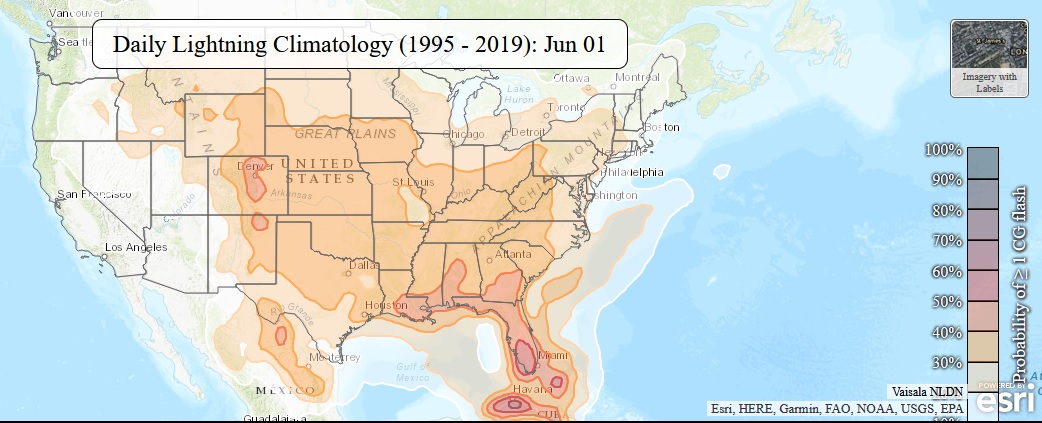Sources of weather and climate data
-

Here is an interesting map display from NOAA’s Storm Prediction Center that shows the daily distribution of lightning stokes across the United States. It is very interesting to see how the area of most lightning strikes moves around over the course of the year. You can view it at https://www.spc.noaa.gov/climo/dataviewer/?mode=climo&category=ltg&product=ltgday.
-

Today is the 25th anniversary of the infamous Fort Collins flash flood, which was the impetus for starting CoCoRaHS (Community Collaborative Rain, Hail & Snow Network). Fort Collins has a semi-arid climate, but rare tropical downpours lingered over the city during the beginning of the annual monsoon season, bringing nearly 15″ of rain in just…
-

The USDM expanded its website capabilities in late June with the addition of county-level statistics on drought to their maps. When you go to their current map at https://droughtmonitor.unl.edu/CurrentMap.aspx and click down through region to state map and then click on your county, you will see a table of drought statistics for that county farther…
-

A few weeks ago, I wrote about how extension agents and agricultural producers in the Southeast can file reports on local conditions, including both droughts and floods. This hyper-local information is used by the weekly authors of the U. S. Drought Monitor to draw updated maps of drought conditions across the country. I took a…
-

Do you like podcasts? Do you like weather? Then you will want to check out this list of the top 25 podcasts focused on weather and see if any strike your fancy while you are spending hours in the car or in the field. I’ve been a guest on a few of them and listen…
-

Here is an interesting resource for farmers who want to learn more about resiliency. This is an online “flipbook” that allows you to read it by electronically flipping pages like a regular book. The book discusses resilient farming, including an overview of climate and weather, a description of different related risks that farmers have, and…
-

Today is the first day of the Atlantic Hurricane Season, and we are already active with Investigation 91 just off the east coast of the Yucutan Peninsula. There is a small chance this could become TS Alex in the next day or two before heading over to southern Florida for some wet weather. For those…